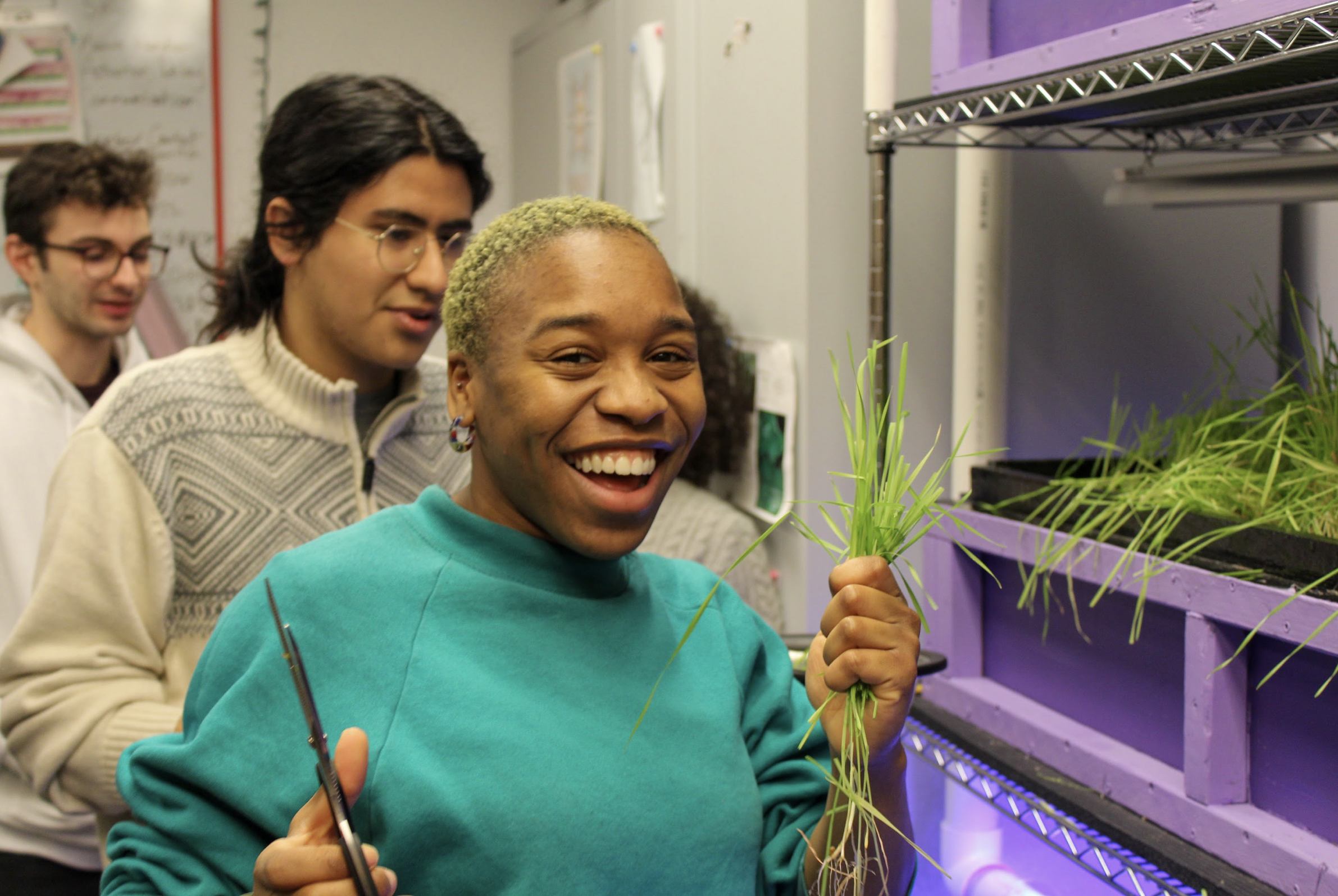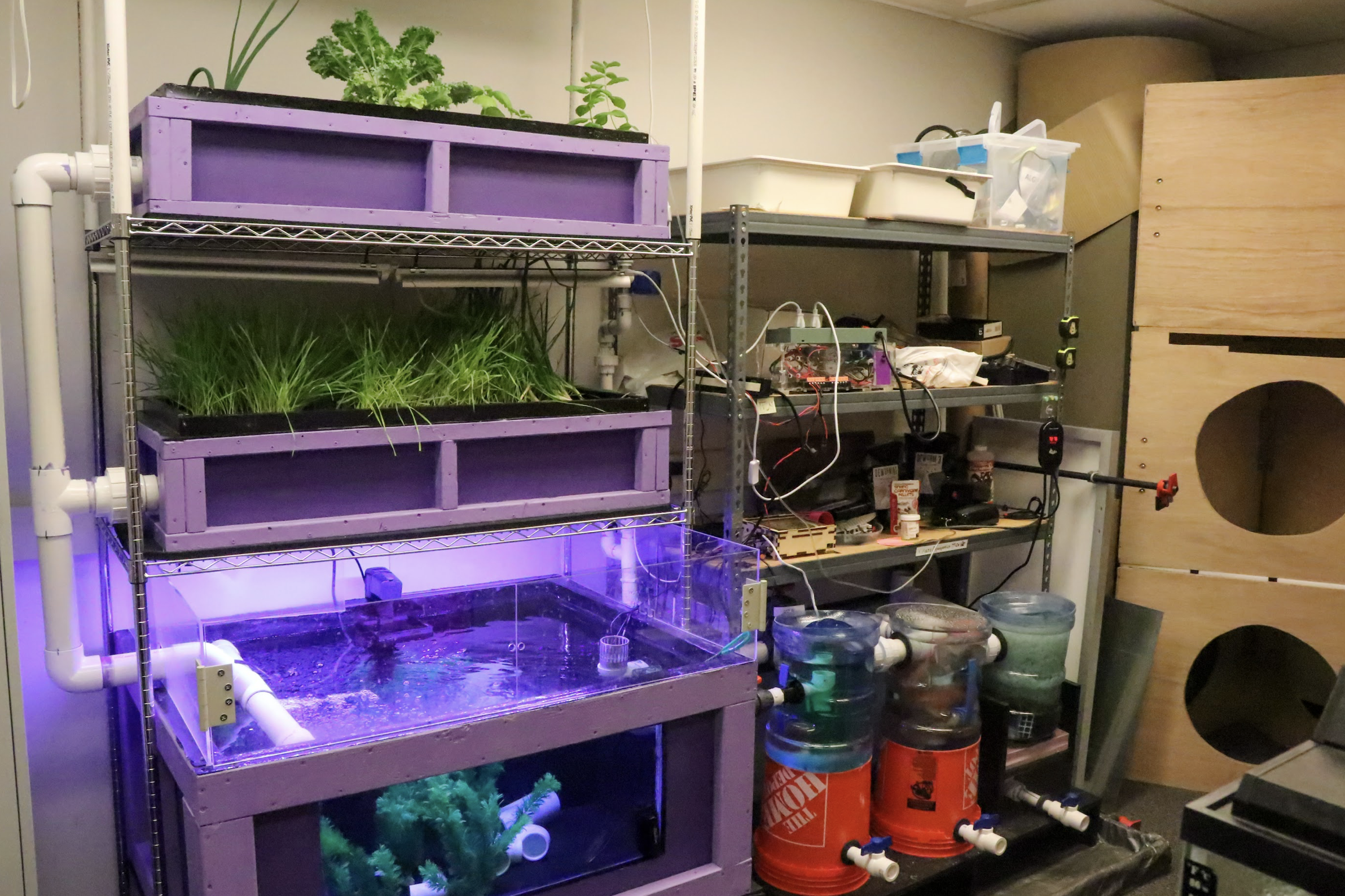
More environmental solutions will be needed as the planet’s surface temperature continues to climb, with the planet’s ten warmest years all occurring since 2010, according to a January 2023 study published by the National Oceanic and Atmospheric Administration. Engineers for a Sustainable World (ESW) believes enacting true change for future generations requires us to rethink modern systems of living entirely.
Methods of traditional farming need to be reconsidered as we aspire towards creating a more eco-friendly world, especially in America where some farmlands use up more water than entire states. New practices that will be less dependent on a dwindling water supply should be introduced, according to environmental advocacy organizations like the National Environmental Education Foundation.
This past year, McCormick fourth-years Bill Yen and Callista Sukohardjo led two of ESW’s largest projects to date: AutoAquaponics and SmartTree.
AutoAquaponics provides potential for water conservation
Two floors below street level of Sheridan Road, in the sub-basement of the Ford Motor Company Engineering Design Center, Yen and ESW are working on a proof of concept AutoAquaponics system with the goal of running as much of the system remotely as possible.
The project will demonstrate how just about anyone could build an urban, indoor farming system that can be operated from a distance.
AutoAquaponics is a setup made up of two smaller systems that interact with one another: aquaculture – a fish tank with controlled conditions – and hydroponics – the beds of crops where water is pumped. The system, which would have to be installed indoors, can be monitored remotely.
There isn’t a difference between a plant grown in water and a plant grown in soil, and ESW’s AutoAquaponics system takes advantage of that by using hydroponics, the process of growing crops in water rather than soil. The system will grow a small set of crops in a mix of nutrient solution and water.
Hydroponics conserves more water than traditional farming, where plants don’t obtain 60% of water, according to the Grains Research and Development Corporation. Additionally, traditional agriculture is the leading cause of water pollution in the United States; a U.S. Geological Survey found that over 16 million tons of fertilizer, nitrogen and pesticides are applied to U.S. crops annually.
Before COVID sent students home from campus, ESW managed a simpler hydroponics system that required a weekly maintenance routine of dumping nutrient solution, cleaning the system and refilling it to ensure sterility.
“When I was a freshman, I thought, ‘OK, what if we can make a system that is automatic so no one has to come in here, change our water, maintain it, feed it and then babysit it?’ We can monitor that it works from the comfort of our own home,” Yen said.
The AutoAquaponics project grew from Yen’s idea – an alternative farming system which utilizes a fraction of the water traditional crop farming requires.

Water cycles from the fish tank where the fish defecate into a filtration system and then through the crop roots. After the ammonia is filtered out from the fish excrement, the system pumps the nutrient-rich water into the plant beds where the crops grow hydroponically. The plants also filter the water by absorbing the nutrients via their roots. The clean water is then pumped back into the fish tank. Water levels of each crop reservoir are adjusted through automated timing and sensors, so every ounce of water in the system is put to use.
“The advantage of this is that we're recycling that water, so it actually uses 80 to 90% less water than traditional agriculture,” Yen said. ”Most of the water you put into a farm outside actually just flows away.”
McCormick fourth-year Aymen Lamsahel said that the AutoAquaponics project addresses food and water insecurity issues by providing an autopilot system that could be mass produced.
The AutoAquaponics system is contingent on reliable power and clean water supply, something not every community in the country has access to, Lamsahel said.
Yen said they completed a full month of automation last summer, and though he’s graduating, the team hopes to accomplish a period of complete automation longer than one month to present a proof of concept to people interested in integrating more sustainable life practices into their everyday life.
“We want to build a cool, novel system that doesn't exist yet. There's no fully automated aquaponic system right now and we're not there yet, but we're getting there,” Yen said. “We want to use this as a model system to teach people about AutoAquaponics and the roles of smart technologies in agriculture.”
Yen said the total amount the club spent on materials to make the AutoAquaponics rig is between $5,000 and $6,000. Although it will require far less labor, there is a need for human supervision to harvest crops and clean up deceased fish.
Harold Kung, professor of chemical and biological engineering at Northwestern, who served as faculty advisor to ESW for approximately 15 years before handing off duties to associate professor George Wells in February 2023, wrote in an email that while Yen’s $6,000 figure “does not include R&D [research and development],” the blueprint for it means that if someone wants to build a system of their own, “the cost is realistic.”
“Anyone can go on the internet now, find our files and then make this themselves,” Yen said. “All these dimensions and drawings are published. The same thing for our hardware and our software system, so you can go download our code and run this exact same program that controls the system.”
The AutoAquaponics team regularly publishes updates to their project page and launched their website where anyone can read the system’s vital statistics.
What’s a SmartTree, anyway?
ESW’s more immediate goal is to upgrade and beautify Northwestern’s campus by bringing students more outdoor spaces to enjoy through projects like GreenWall, which is still in its design phase, and SmartTree, their oldest endeavor.
“We're focused on creating a modular solar power charging station on campus, just to charge your laptops and devices while you're studying outside,” said McCormick fourth-year Callista Sukohardjo, co-president of ESW and former project lead of SmartTree.
With construction of a prototype beginning this year, SmartTree has proven to be a challenging feat of engineering.
It’s been nearly a decade since ESW officially launched the project in 2014. The design of SmartTree has changed over the years before settling on a three-sided desk station, with solar panels overhead to charge users’ electronics.
“There's been a lot of iterations, I don't even know the names of the people who really started it. I mean, they're way past our time,” said McCormick and Weinberg second-year Jack Vogel, who has been working on the SmartTree construction and electronics teams.
The goal is to make outdoor spaces accessible for students in warmer weather. They’re also ensuring that the SmartTree can be deconstructed, so it can be relocated to various spots on campus rather than set down roots as a permanent fixture.
This decision was a result of one of the more difficult aspects of design, as prior plans had the fixture running 120 volts of electricity. It was soon discovered by ESW that running such a large amount of voltage would require them to dig 8-feet-deep holes for grounding rods at every potential SmartTree location, and would require an electrician to re-install the system every time it would be moved due to risks associated with high-voltage equipment. Since this discovery, the team moved to lower SmartTree’s voltage output so it could be safely installed and moved around by ESW rather than hiring an electrician each time.
ESW says they hope to have construction on the initial prototype finished sometime next year.
No matter what the group of 30 some students are dedicating free time to, Sukohardjo said they all came into ESW with the same goal: innovating through green engineering.
She added ESW’s community gave her the chance to tap into class knowledge during her time as project lead and apply “a lot of the skills like material selection, choosing manufacturing methods, design reviews.” She found these skills are applicable to SmartTree.
“As an engineer at Northwestern, you take a lot of classes that teach you technical skills, but there's not that many opportunities to apply these skills in an application that you're really passionate about,” Sukohardjo said.